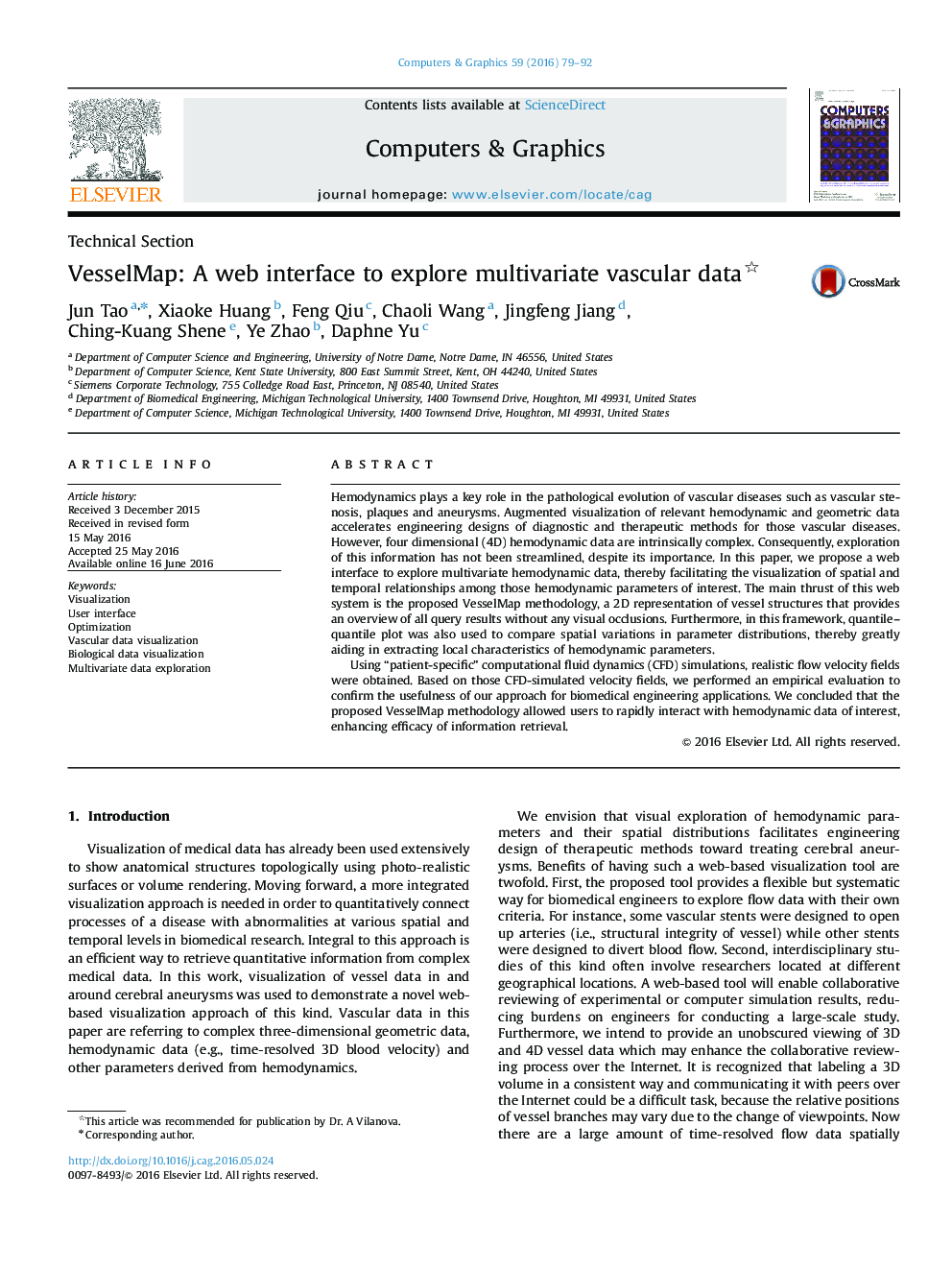| کد مقاله | کد نشریه | سال انتشار | مقاله انگلیسی | نسخه تمام متن |
|---|---|---|---|---|
| 441772 | 691927 | 2016 | 14 صفحه PDF | دانلود رایگان |
• We propose a 2D representation of vessel structures that eliminates occlusions.
• We provide a segmentation scheme that produces various results based on user input.
• We implement a rich set of queries to support dynamic knowledge discover during particle tracing.
• We design a difference matrix with multiple Q–Q plots for detailed comparison among local regions.
• We evaluate our approach both qualitatively and quantitatively.
Hemodynamics plays a key role in the pathological evolution of vascular diseases such as vascular stenosis, plaques and aneurysms. Augmented visualization of relevant hemodynamic and geometric data accelerates engineering designs of diagnostic and therapeutic methods for those vascular diseases. However, four dimensional (4D) hemodynamic data are intrinsically complex. Consequently, exploration of this information has not been streamlined, despite its importance. In this paper, we propose a web interface to explore multivariate hemodynamic data, thereby facilitating the visualization of spatial and temporal relationships among those hemodynamic parameters of interest. The main thrust of this web system is the proposed VesselMap methodology, a 2D representation of vessel structures that provides an overview of all query results without any visual occlusions. Furthermore, in this framework, quantile–quantile plot was also used to compare spatial variations in parameter distributions, thereby greatly aiding in extracting local characteristics of hemodynamic parameters.Using “patient-specific” computational fluid dynamics (CFD) simulations, realistic flow velocity fields were obtained. Based on those CFD-simulated velocity fields, we performed an empirical evaluation to confirm the usefulness of our approach for biomedical engineering applications. We concluded that the proposed VesselMap methodology allowed users to rapidly interact with hemodynamic data of interest, enhancing efficacy of information retrieval.
VesselMap provides a 2D representation of vessel structures for efficient interaction together with a series of queries for dynamic knowledge discovery of vascular data sets during particle tracing.Figure optionsDownload high-quality image (138 K)Download as PowerPoint slide
Journal: Computers & Graphics - Volume 59, October 2016, Pages 79–92
